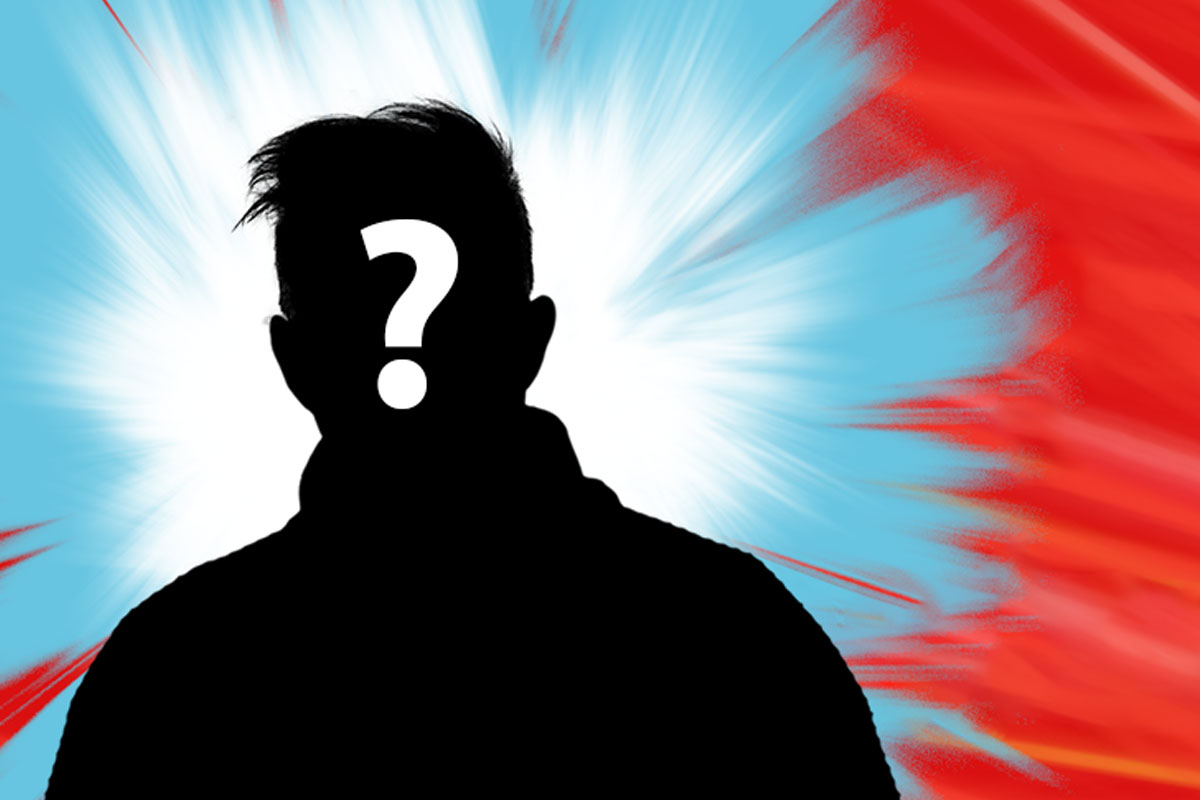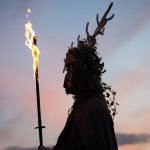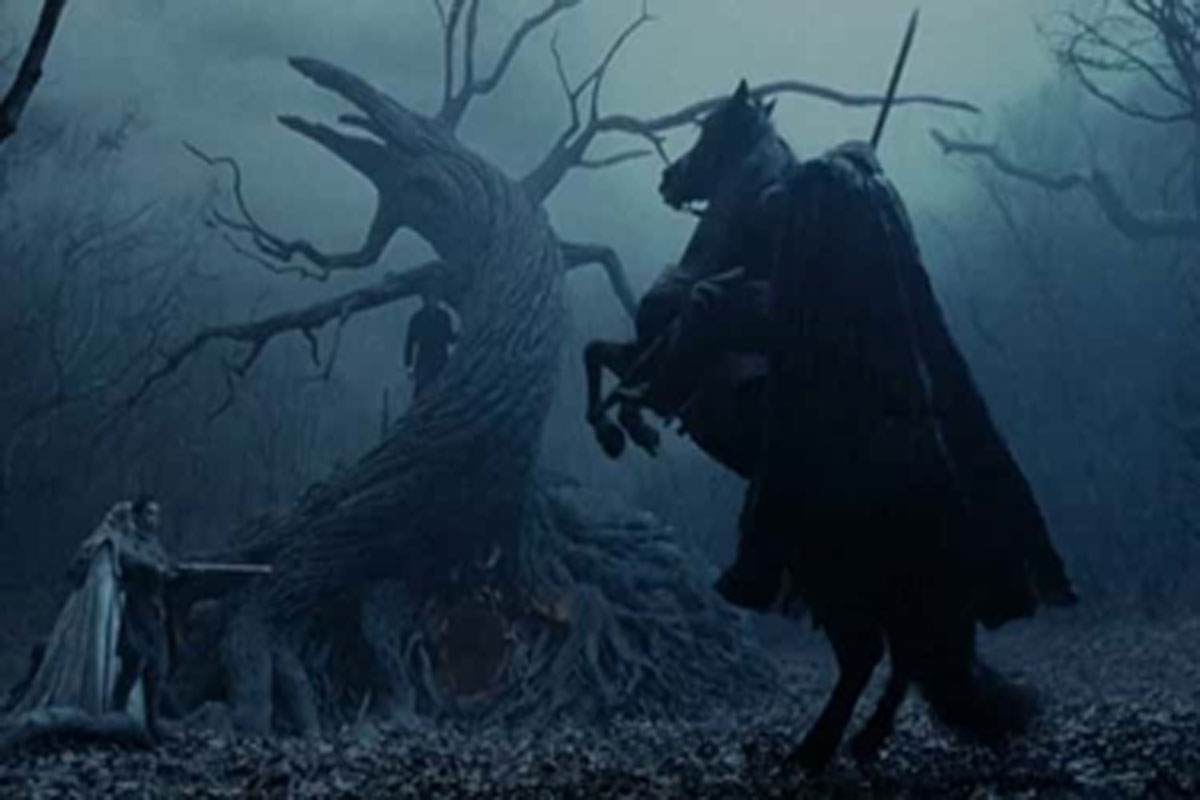
Facts About Classic Halloween Creatures That Make Us Say, ‘Oooooh!’
Emily Mast
Ghosts, vampires, mummies, witches – the classic line-up for a good ol’ Halloween bash. We’ve grown up loving (and fearing) these creatures, but do we know where their stories really came from?
How did witches become associated with brooms? And black cats? How long have ghosts haunted people? Was the Headless Horseman based on a real person? Were mummies neighbors of the living? (That one might freak you out a little.)
So, if you’re a Halloween lover, read on – and be sure to share your favorite spooky fun fact at your yearly costume party.
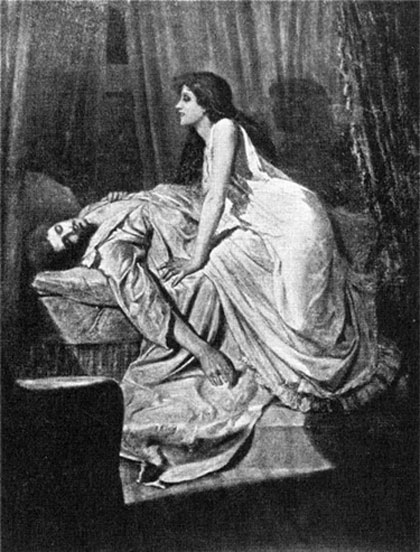 Photo: Philip Burne-Jones / Wikimedia Commons / Public domain
Photo: Philip Burne-Jones / Wikimedia Commons / Public domain
When we think of a vampire, one of their most pronounced features is their large, sharp fangs. How else would they be able to get access to the blood they so crave?
While there have been multiple sources for our modern picture of vampires, one influence was from descriptions of Kali, the Hindu goddess of death and destruction. Kali was said to have bloodstained fangs, a skirt or girdle of human arms, and a necklace of decapitated heads.
One of the most famous stories of Kali was when she was fighting a demon, Raktabija (or “blood-seed”). Every time Raktabija’s blood touched the ground, another demon would spring up to life.
So, Kali had the brilliant idea to jump upon the beast and drink every drop of blood from its body. When she was done, he could no longer reanimate, and Kali was victorious.
• Surprising origin?
The Scottish ‘Headless Horseman’ Originated From A Battle On The Isle Of Mull In 1538
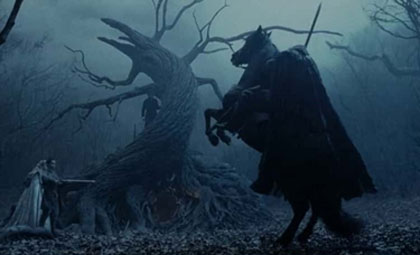 Photo: Sleepy Hollow / Paramount Pictures
Photo: Sleepy Hollow / Paramount Pictures
“The Headless Horseman” is a fabled creature that has long scared children every October. The unlucky bloke who inspired the story was one Eoghan a’Chinn Bhig, or Ewen of the Little Head.
Ewen’s wife repeatedly pushed him to ask for more land from his father, and each time he requested more land, his father refused.
This back and forth reached a tipping point when his father had finally had enough – and back then, that meant an armored confrontation to figure out clan disputes.
The day before the battle, Ewen was riding on his horse when he came upon a fairy, who could see the future. She told Ewen that the next morning, if butter was placed before him at the breakfast table, he would prevail. If he had to ask for butter, he would lose.
The next day, Ewen forgot all about her words – until he had to ask for butter. Now, going onto the battlefield he was worried – but he charged ahead anyway.
This was his downfall – when charging into the thick of the fight, Ewen was left vulnerable – and an opposing clansman swung his sword and chopped his head clean off.
Ewen’s horse was so startled by the ordeal that he kept running with Ewen’s headless body for miles – creating the basis for the spooky tale.
• Surprising origin?
Banshees Could Be Both Guardian-Type Creatures As Well As Harbingers Of Death
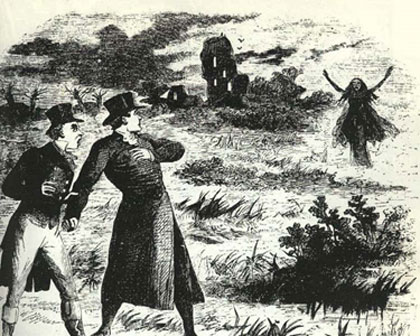 Photo: R. Prowse / Wikimedia Commons / Public domain
Photo: R. Prowse / Wikimedia Commons / Public domain
In Irish folklore, a banshee was a woman of some kind – young, old, beautiful, haggard – who often had long hair and would scream bloody murder. (Quite literally, in fact.)
Yes, the banshee’s scream was only heard before an impending death within a family. Oftentimes, it was believed that only the person about to die could hear the banshee’s cries.
Many of us have heard of a banshee being bad or evil; these were women who hated their families in their lifetime, and could now haunt them with great delight. However, there could also be kind banshees, whose songs were filled with sorrow and love for the soon-to-be departed loved one.
It seems the banshee legend may have spurned from the 8th century, when women would be paid to sing tribute to a lost loved one. Some of these women accepted alcohol as payment; and because of this “unsavory” exchange, the women were looked down on, and eventually became inspiration for the screaming creatures of death.
• Surprising origin?
Mary Shelley’s ‘Frankenstein’ And Polidori’s ‘The Vampyre’ Were Inspired On The Same Holiday Vacation
 Photo: Frankenstein / Universal Pictures
Photo: Frankenstein / Universal Pictures
The year of 1816 was known as “the year without a summer.” Mount Tambora had erupted in Indonesia the year prior, and its volcanic ash had cooled the entire planet’s temperature.
So, what would have normally been a warm holiday to Lake Geneva turned out to be a dark and cold endeavor. With this weather as the backdrop, Mary Shelley, her future husband Percy Bysshe Shelley, Lord Byron, and Dr. John Polidori all needed some other way to spend their time on their vacation.
Lord Byron suggested a ghost story competition, and Shelley’s Frankenstein was born. Yet, during this writing session, Polidori also got this inspiration for his short prose work The Vampyre.
The Vampyre was a source of inspiration for Bram Stoker while writing Dracula, which was released almost 80 years after Polidori’s work.
• Surprising origin?
The Oldest Mythological Creature In North America is the Pukwudgie, A 3-Foot Goblin
 Photo: John Dickson Batten / Wikimedia Commons / Public domain
Photo: John Dickson Batten / Wikimedia Commons / Public domain
Every region has its own monster: the Loch Ness Monster, Bigfoot, the Yeti.
In North America, the earliest detailed monster is the Pukwudgie, a short, human-like creature with a dog-like nose. Some accounts say they look half-porcupine, and that they can have smooth gray skin that can glow.
The stories of the Pukwudgie originated with the Wampanoag, Mohican, and Algonquin people. However, they don’t all believe the same thing when it comes to the mischievous little creatures.
The Great Lake tribes believe that they can be troublesome, but are overall harmless. The Northeast Algonquian people, on the other hand, believe the Pukwudgies will become violent if provoked, but will leave you alone if you leave them alone.
Many sightings of the Pukwudgie come from Massachusetts, where this is an actual Pukwudgie crossing sign that was been put up in an area with particularly high sightings.
• Surprising origin?
The South American Chinchorro People Were Making Mummies 2,000 Years Before The Egyptians Did (And May Have Openly Lived Among The Bodies)
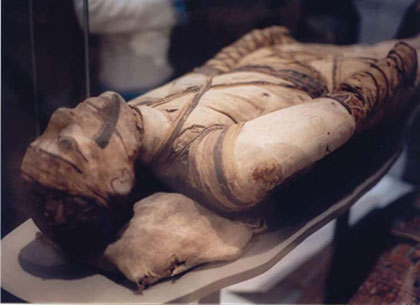 Photo: British Museum / Wikimedia Commons / CC-BY-SA 3.0
Photo: British Museum / Wikimedia Commons / CC-BY-SA 3.0
The Chinchorro people lived in modern-day Peru and Chile over 7,000 years ago. Around 5,000 BCE, it seems that their climate started becoming less harsh – allowing the population to flourish.
But more people meant more dead bodies – and in the desert-like conditions of their environment, these bodies didn’t decompose.
It’s been theorized that this lack of decomposition is what led the Chinchorro people to start mummifying their dead. Since the bodies were around a long time (and the Chinchorro people dug shallow graves) it’s believed that the community may have lived their daily lives amongst the dead as they resurfaced to the Earth.
Because of this, they wanted to make sure their dead looked good.
This involved an extensive process of removing the organs, packing the body with clay, sewing the skin back up, painting the body black, and placing wigs on the bodies. This process was extended to all people who died – no matter the class or age.
• Surprising origin?
Witches ‘Flying’ On Broomsticks May Date Back To A Lewd (And Hallucinogenic) Shamanic Practice
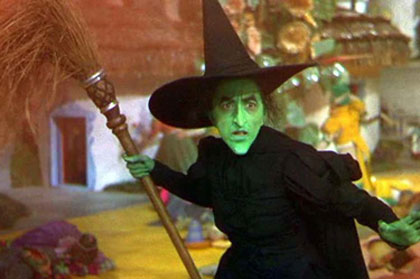 Photo: The Wizard of Oz / Loew’s, Inc
Photo: The Wizard of Oz / Loew’s, Inc
Can you imagine if the Wicked Witch of the West had simply walked around? She wouldn’t have been half as scary! No, her flying on her iconic broom was what really sold her as the magical villain of Oz.
But where did this idea come from anyway – that witches fly on brooms?
Well, there are a few different theories. Since brooms have become a representation of housework, women have, unfortunately, always been associated with them.
So when the age of vilifying witches came about in the 15th century, brooms and women were already closely linked in most people’s eyes. Since they found brooms in the homes of “convicted” witches, this only furthered the connection. (Because who else would have a broom in their home?)
It was then believed that witches actually used the broomstick to help apply the magical potions they concocted. Because witches couldn’t have simply drank those potions – no, instead they were believed to have absorbed them through the skin… specifically through their more “intimate” body parts.
• Surprising origin?
The Oldest Drawing Of A Ghost, And Instructions For Exorcising It, Dates Back 3,500 Years
 Photo: Maksim Sokolov / Wikimedia Commons / CC-BY-SA 4.0
Photo: Maksim Sokolov / Wikimedia Commons / CC-BY-SA 4.0
Ghosts are by no means a modern fear. Different cultures on different continents have long been weary of the spooky specters. But the earliest record of a ghost is remarkably unique.
In 2021, a museum curator discovered the etching of a ghost on a 3,500-year-old Babylonian tablet. On the tablet, there is a bearded man who has his hands bound together, with a woman leading him forward with the rope.
After translating the script, it seems that this man is in fact a ghost, being led to the underworld by the woman. In the detailed instructions, the tablet explains this is how you get rid of a ghost – you give it a lover. The whole ghost-vanquishing process goes as follows:
1. Make figurines of a man and woman
2. Give the figurines specific items, including travel provisions for the man and furniture for the woman
3. Bury the figurines at sunrise
4. Have an exorcist recite a spell – sending the ghost to the underworld
What is perhaps the most bone-chilling aspect of the ritual was the last line: “Do not look behind you.”
• Surprising origin?
The Ghoul May Be Linked To The Gallus, A Pre-Islamic Mythological Demon
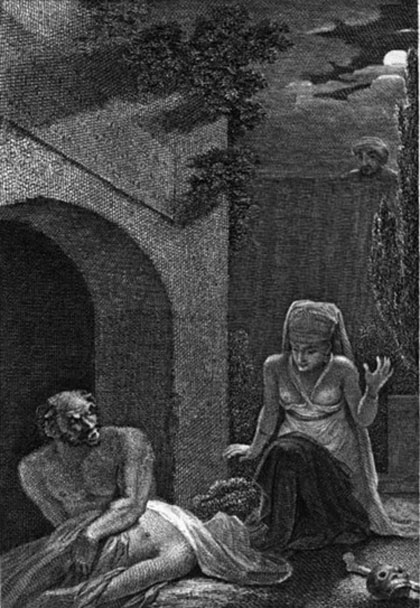 Photo: R. Smirke, Esq., R.A. / Wikimedia Commons / Public domain
Photo: R. Smirke, Esq., R.A. / Wikimedia Commons / Public domain
The demons of 8th century surely didn’t mess around. Labeled as “ghouls,” these creatures feasted on flesh and loved to pull cruel tricks on their victims. They even disguised themselves as beautiful women to kidnap and kill lustful men.
The Arabic word ghul (where we get “ghoul” today) may have originally come from the name Gallu, an ancient Mesopotamian god.
• Surprising origin?
The Werewolf Can Be Traced Back To Ovid, An Ancient Roman Poet
 Photo: Unknown / Wikimedia Commons / Public domain
Photo: Unknown / Wikimedia Commons / Public domain
Werewolf tales have been around for thousands of years. All the way back in 425 BCE, the Greek historian Herodotus detailed a tribe of men who changed into wolves for part of the year. (It turns out, this tribe was actually from what is present-day Russia – so they were likely using wolf skins to keep warm.)
But the actual transformational process of man to wolf can be attributed to Ovid, an ancient Roman poet. Ovid wrote of Lycaon, a tyrant king who executed and mutilated someone under Zeus’s protection. Zeus was understandably angry, and turned Lycaon into a wolf as punishment for his abhorrent acts.
Ovid goes into great detail describing what Lycaon experienced as he turned into a wolf:
…He tried to speak, but his voice broke into an echoing howl. His ravening soul infected his jaws; his murderous longings were turned on the cattle; he still was possessed by bloodlust. His garments were changed to a shaggy coat and his arms into legs. He was now transformed into a wolf.
• Surprising origin?
Owning A Black Cat Was Enough To Result In Arrest During The English Witch Trials
 Photo: DrL / WIkimedia Commons / CC-BY-SA 2.5
Photo: DrL / WIkimedia Commons / CC-BY-SA 2.5
During the witch trials under Queen Elizabeth I in the 16th century, many things could instigate an investigation into possible witchcraft. Owning a broom was one (as we’ve seen in this list).
Another was owning an animal.
While the black cat is now synonymous with witches, back then, any animals could be used as proof of witch-hood (though the cat was the most popular). This included dogs, toads, birds, or rats.
These animals were believed to be the Devil reincarnated, whom the witch has made a pact with. By attaching this animal to their soul, the witch gained power to harm others.
Additionally, the witch was said to often feed this animal with her own blood.
• Surprising origin?
You Can Blame The Nuclear Bomb For Our Collective Zombie Fascination
 Photo: The Walking Dead / AMC
Photo: The Walking Dead / AMC
There’s been an interesting shift in pop culture and literature in the past century. In past eras, like the Enlightenment Period or the Industrial Revolution, people were focused on the bright futures that could be built.
However, it seems like today we’re overly focused on zombie apocalypses and doomsdays. This isn’t by coincidence.
After World War II, and especially the horrific aftermath of the nuclear bombs dropped on Hiroshima and Nagasaki, the world saw that mass destruction was possible. Many people adopted an “it had happened once – it could happen again” mindset.
Others still needed a way to process these terrors, and the possibility of human extinction in the future. So, we began writing and drawing and storytelling about these possibilities.
Stanford literary scholar Angela Becerra Vidergar says that it’s not all gloom and doom, though. By consuming this media, we allow ourselves:
to work through some of those difficult, threatening ethical dilemmas, or to think about their own capacity for survival.
Graveyard shift
ranker.com





